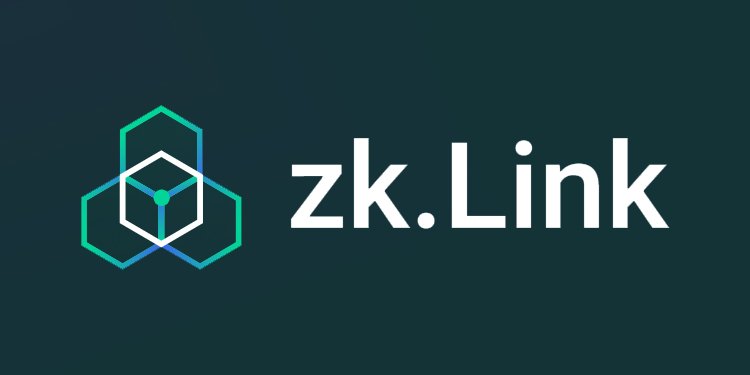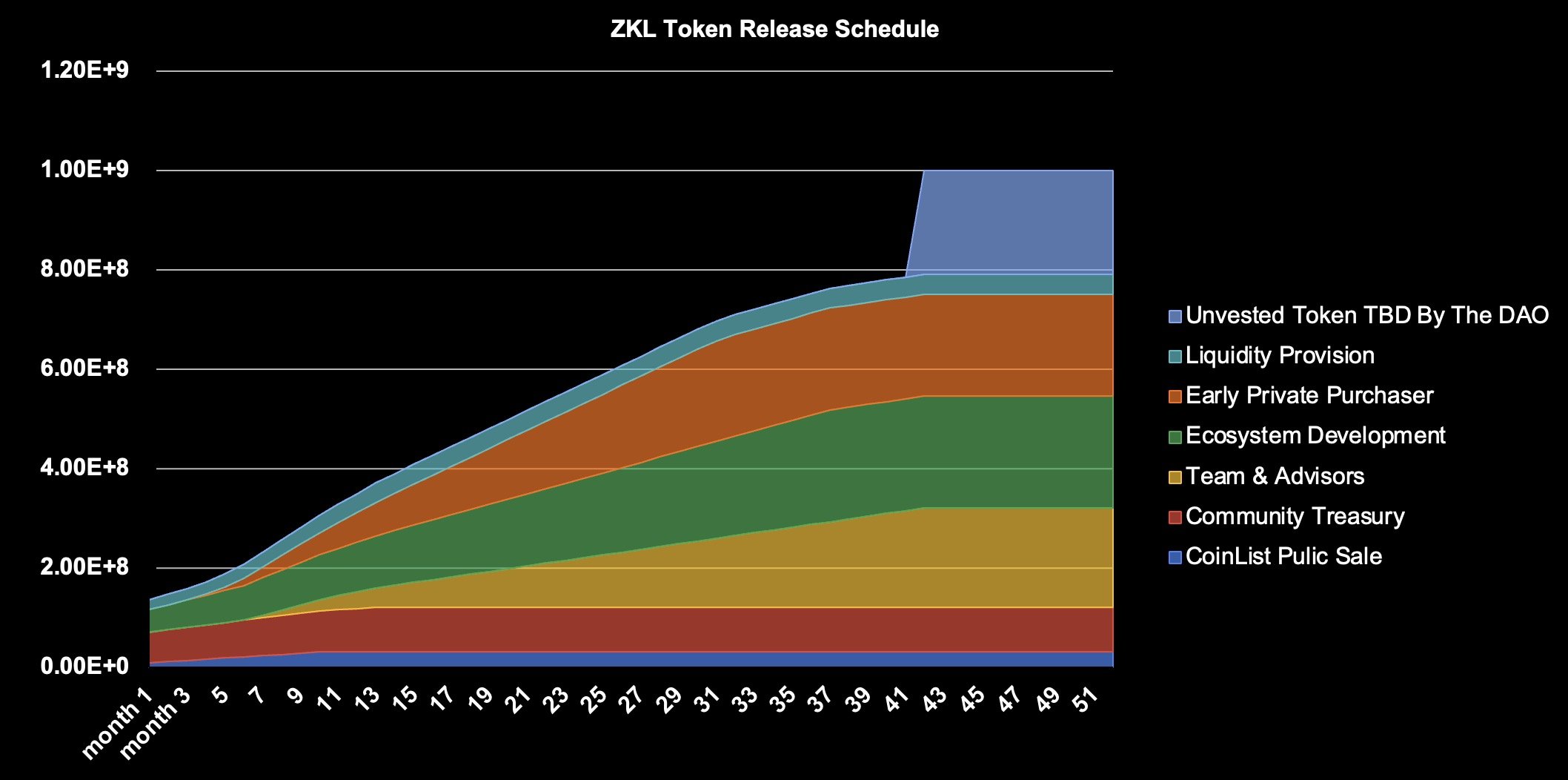zkLink: A New Token Sale on Coinlist

Coinlist, a prominent ICO platform, has recently announced its second token sale of the year. Let’s take a closer look at the zkLink project and try to estimate the potential market price of ZKP after its release.
On January 11, Coinlist announced an upcoming ICO for zkLink, a protocol leveraging zero-knowledge proof technology for dApp development within the Ethereum ecosystem. The token sale is set for January 25 at 18:00 UTC, and registrations are open until January 22.
ICO participants who max out their allocation at $500 will be eligible to request additional tokens. These tokens will be randomly distributed among all eligible users. To receive this additional allocation, participants must deposit their desired purchase amount by January 31, 2024, 11:59 UTC.

Applications leveraging zkLink technology can facilitate token exchanges across L1 and L2 networks without the need for cross-chain bridges. As of January 2024, zkLink supports a range of networks including Ethereum, Avalanche, zkSync, Arbitrum, and 12 other blockchains.
Currently, the zkLink ecosystem hosts three dApps - ZKEX, Openworld, and zkJump. ZKEX and Openworld are decentralized exchanges that eliminate the need for traditional bridges. zkJump, on the other hand, is a bridge that facilitates cross-chain exchanges without using a wrapping mechanism.
Coinbase Ventures, a Tier-1 fund, was a notable participant in zkLink’s funding. Its portfolio includes successful investments in SUI, APT, and Yuga Labs.
While there’s no certainty that zkLink will achieve similar success, its comparable investment volume to Chainflip adds optimism for its potential performance in the upcoming token sale.
A vital aspect of zkLink's tokenomics is the volume of tokens to be released post-ICO. The more ZKL tokens held by community members, drop hunters, and speculators, the higher the possibility of mass selling, potentially impacting the price.

As per Coinlist's blog, the generation of tokens is slated for around March 31st. Given our knowledge of ZKL's total supply, its token distribution, and the unlocking schedule at TGE, we’ve calculated that about 136,375,000 ZKL tokens will be in circulation this March, representing 13.6% of the total supply.

Community members and ICO participants will control 43.6% of ZKL during TGE. It’s uncertain who among them will sell their assets. However, even in the most adverse scenario, the remaining ZKL will still be predominantly held by the developers.
Drawing on CoinGecko's data, Chainflip’s capitalization stands at $94.6 million. If zkLink's metrics were to match those of Chainflip, the ZKL price could reach $0.69. This scenario would translate to a profit of 4.6 times the initial investment, considering a buy-in at $0.15 and a sell-off at $0.69.
Yet, it's crucial to remember that these are just projections. No calculation can guarantee a 100% success rate, so it's always wise to acknowledge the risks and conduct thorough personal research.
Sale Highlights:
- Tokens allocated for the ICO: 31,250,000 ZKL (3.13% of the total supply).
- Price per token: $0.15.
- Distribution mechanism: ICO winners will initially receive 30% of the tokens around March 31, 2024, followed by a gradual distribution of ZKL over the next 9 months.
- Purchase limits: $100–$500.
- Additional allocation request: $100–$1500.
ICO participants who max out their allocation at $500 will be eligible to request additional tokens. These tokens will be randomly distributed among all eligible users. To receive this additional allocation, participants must deposit their desired purchase amount by January 31, 2024, 11:59 UTC.
Additionally, as per Coinlist’s new rule introduced in July 2023, users must have sufficient USDT or USDC in their account beforehand, matching the amount they intend to use for the initial ZKL purchase. This rule aims to curb the practice of multi-accounting.
What is zkLink: Definition, Benefits, and Investors

zkLink Logo. Source: mirror.xyz
zkLink is a multi-chain infrastructure tailored for interactions with DEXs, NFTs, and other on-chain solutions. It's built on the zk-SNARK technology, which enhances both the confidentiality and scalability of the network.
Applications leveraging zkLink technology can facilitate token exchanges across L1 and L2 networks without the need for cross-chain bridges. As of January 2024, zkLink supports a range of networks including Ethereum, Avalanche, zkSync, Arbitrum, and 12 other blockchains.
Key Benefits of zkLink:
- Liquidity Aggregation: zkLink integrates tokens deployed across various blockchains. For example, it can unify USDT ERC20, USDT BEP20, and USDT ARB into a single USDT token in zkLink App Rollups and zkLink L3 networks. Similarly, ETH across EVM-compatible networks is consolidated.
- Enhanced Transaction Speed: Leveraging ZK protocols that only verify transaction data, zkLink boosts operational speed and network scalability. Developers of zkLink claim it can handle up to 1,000 transactions per second (TPS).
- Flexible Application Deployment: zkLink emphasizes computation and execution levels, allowing data availability to be managed by platforms like Celestia and Polygon. This flexibility enables dApp developers to customize components to suit their specific needs.
Currently, the zkLink ecosystem hosts three dApps - ZKEX, Openworld, and zkJump. ZKEX and Openworld are decentralized exchanges that eliminate the need for traditional bridges. zkJump, on the other hand, is a bridge that facilitates cross-chain exchanges without using a wrapping mechanism.
To date, zkLink has conducted two funding rounds, raising a total of $18.5 million:
- On October 22, 2021, the project raised $8.5 million from various funds including Morningstar Ventures, Republic, Arrington XRP Capital, and more.
- By May 4, 2023, an additional $10 million was secured from investors like Coinbase Ventures, Ascensive Assets, among others.
Coinbase Ventures, a Tier-1 fund, was a notable participant in zkLink’s funding. Its portfolio includes successful investments in SUI, APT, and Yuga Labs.
Chainflip, zkLink's most comparable competitor, already completed its ICO on Coinlist in the previous year. Chainflip attracted $19.8 million across three rounds before its token sale, with its FLIP token yielding a 2.47x return since the ICO.
While there’s no certainty that zkLink will achieve similar success, its comparable investment volume to Chainflip adds optimism for its potential performance in the upcoming token sale.
zkLink Tokenomics
ZKL serves as both a utility and governance token for zkLink, established on the Ethereum network under the ERC-20 standard. This ensures compatibility with other EVM-compatible L1-L2 blockchains. The total supply of ZKL tokens is capped at 1 billion, with a Fully Diluted Valuation (FDV) set at $150 million.
Token Roles:
- Validator Rewards: ВIn the zk-SNARKs system, validators stake ZKL tokens and receive rewards for successfully verifying transactions.
- Licensing Fee: Decentralized applications on the zkLink network pay fees for using its infrastructure. An alternative payment option is a portion of the dApps' revenue.
- Governance: ZKL tokens are utilized for creating polls and voting on protocol updates.
- Privileges: Holding ZKL tokens offers benefits like discounts on transaction fees and exclusive rights to mint certain NFTs.
Distribution of ZKL Supply:
- Community: 29.875% (10% for community rewards, 15.875% for community reserves, and 4% for developer incentives).
- Liquidity Reserve: 4%.
- Ecosystem Development: 22.5%.
- Team and Advisors: 20%.
- Early Investors: 20.5% (pre-seed, seed, and private funding round participants).
- Coinlist Token Sale Participants: 3.125%.
A vital aspect of zkLink's tokenomics is the volume of tokens to be released post-ICO. The more ZKL tokens held by community members, drop hunters, and speculators, the higher the possibility of mass selling, potentially impacting the price.

ZKL Unlock Schedule. Source: coinlist.co
To accurately compute this value, let’s delve into the ZKL unlocking principles:
- Community rewards: 50% of the ZKL will be accessible at the Token Generation Event (TGE), with the rest set aside for future airdrops, although the date for these is yet to be determined.
- Community reserve: The release date for this is still unknown and will be decided by the DAO leadership. (For our future calculations, we will not include this category.).
- Developer incentives: At TGE, 30% of the tokens will be available, with the remainder to be evenly distributed over the following year.
- Liquidity reserve: Similarly, 50% of the tokens will be available at TGE, with the rest spread out evenly over the next year.
- Ecosystem development: 20% of the tokens will be released at TGE, with the balance distributed evenly over one year.
- Team and advisors: Their tokens will be evenly allocated over three years, starting six months after TGE.
- Pre-seed, seed, and private round participants: Their tokens will be evenly distributed over 27 months following lock-in periods of 5, 4, and 3 months, respectively.
- Coinlist token sale participants: They will receive 30% of their tokens at TGE, with the remainder distributed evenly over nine months.
As per Coinlist's blog, the generation of tokens is slated for around March 31st. Given our knowledge of ZKL's total supply, its token distribution, and the unlocking schedule at TGE, we’ve calculated that about 136,375,000 ZKL tokens will be in circulation this March, representing 13.6% of the total supply.

zkLink Tokenomics. Source: coinlist.co
Different token holders have varying tendencies. Some are quick to sell, while others prefer to hold their assets. A larger number of those inclined to “put pressure on the order book” increases the likelihood of a price drop. We assessed the percentage of the total ZKL supply available at TGE for each category to evaluate this risk.
- Community rewards are the most vulnerable, comprising at least 36.7% of ZKL.
- Developer incentives make up 8.8%. These tokens will likely be distributed later for vulnerability detection and the development of new solutions.
- Liquidity and ecosystem reserves account for 47.7%. Cryptocurrency enthusiasts can be more assured about these categories as the tokens are crucial for sustaining infrastructure operations.
- Coinlist token sale participants hold 6.9%. Historically, most ICO winners tend to sell their tokens on TGE day.
Community members and ICO participants will control 43.6% of ZKL during TGE. It’s uncertain who among them will sell their assets. However, even in the most adverse scenario, the remaining ZKL will still be predominantly held by the developers.
The Expected Profit from the ICO
The token price is calculated by dividing the project's capitalization by the circulating supply. For ZKL, the ICO price is set at $0.15, with a TGE supply of 136,375,000 tokens. This implies a post-token sale capitalization for zkLink of approximately $20.4 million.
Drawing on CoinGecko's data, Chainflip’s capitalization stands at $94.6 million. If zkLink's metrics were to match those of Chainflip, the ZKL price could reach $0.69. This scenario would translate to a profit of 4.6 times the initial investment, considering a buy-in at $0.15 and a sell-off at $0.69.
Yet, it's crucial to remember that these are just projections. No calculation can guarantee a 100% success rate, so it's always wise to acknowledge the risks and conduct thorough personal research.
Recommended


